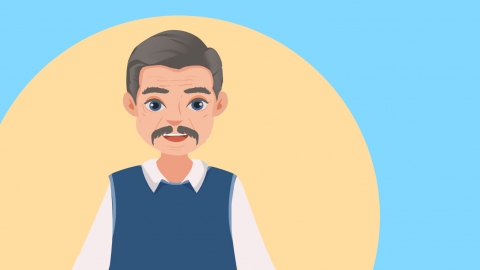What causes purple lips in the elderly?
Generally, purple lips in elderly individuals may be caused by cold exposure, long-term smoking, cheilitis (lip inflammation), anemia, chronic obstructive pulmonary disease (COPD), and other factors. If discomfort occurs, timely medical consultation is recommended. The detailed analysis is as follows:

1. Cold Exposure
In cold environments, the body reduces heat loss by constricting peripheral blood vessels, including those in the lips. Vasoconstriction slows blood flow and decreases the relative oxygen content in the blood, causing the lips to appear purple. It is important to add warm clothing, wear masks or other protective gear during cold weather, and avoid prolonged exposure to low temperatures.
2. Long-term Smoking
Harmful substances in cigarettes, such as nicotine, can constrict blood vessels, reduce oxygen levels in the blood, and damage vascular endothelial cells, impairing circulation. Over time, this may lead to purple lips. Elderly individuals should try to quit smoking, using strategies such as gradual reduction or nicotine replacement therapies to assist in smoking cessation.
3. Cheilitis
Cheilitis is often caused by long-term exposure to wind, sun, local irritants, or allergic reactions. Inflammatory stimulation can cause lip blood vessels to dilate and blood flow to become abnormal, resulting in purple lips, often accompanied by dryness and flaking. Treatment may include topical medications such as triamcinolone acetonide and econazole cream, delnadide cream, or pimecrolimus cream, as directed by a physician.
4. Anemia
Anemia occurs due to deficiencies in blood-forming materials, impaired blood production, or blood loss, leading to reduced red blood cells or hemoglobin levels, diminished oxygen-carrying capacity of the blood, and insufficient oxygen supply to areas such as the lips, causing them to appear purple. Symptoms may also include pale complexion and dizziness. Treatment typically involves medications such as ferrous sulfate tablets, iron fumarate granules, and methylcobalamin tablets, as prescribed by a doctor.
5. Chronic Obstructive Pulmonary Disease (COPD)
COPD is often caused by long-term smoking, air pollution, or recurrent respiratory infections, leading to impaired ventilation and gas exchange in the lungs. Oxygen cannot efficiently enter the bloodstream, and carbon dioxide elimination is hindered, resulting in decreased blood oxygen levels and purple lips. Symptoms may also include coughing and sputum production. Treatment options may include bronchodilator inhalers such as salbutamol aerosol, ipratropium bromide aerosol, and salmeterol fluticasone propionate inhalation powder, as recommended by a physician.
In daily life, elderly individuals should undergo regular medical check-ups to detect hidden diseases early. They should also maintain moderate physical activity to enhance physical resistance, while paying attention to exercise intensity and duration to avoid excessive fatigue.








